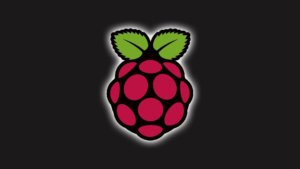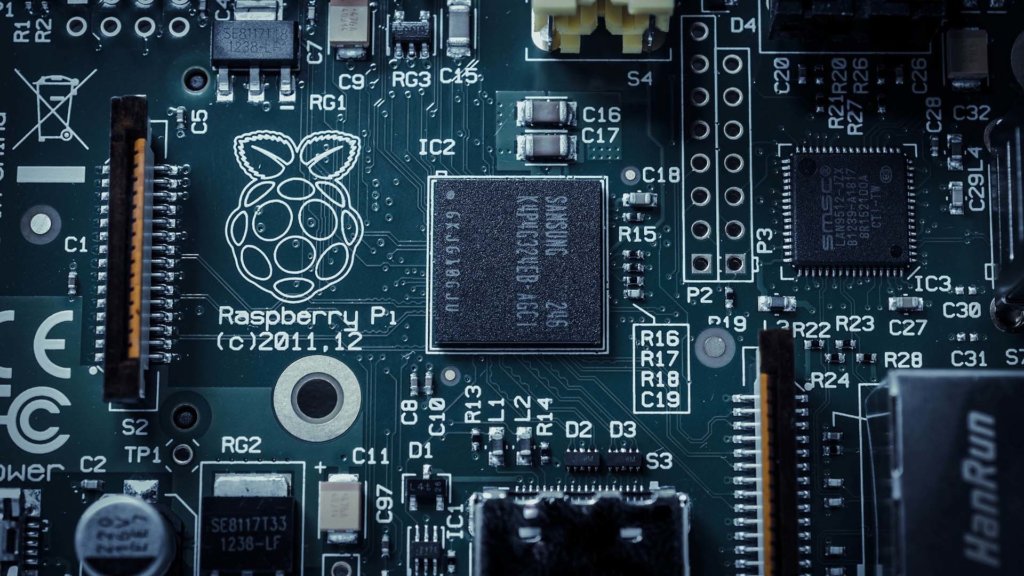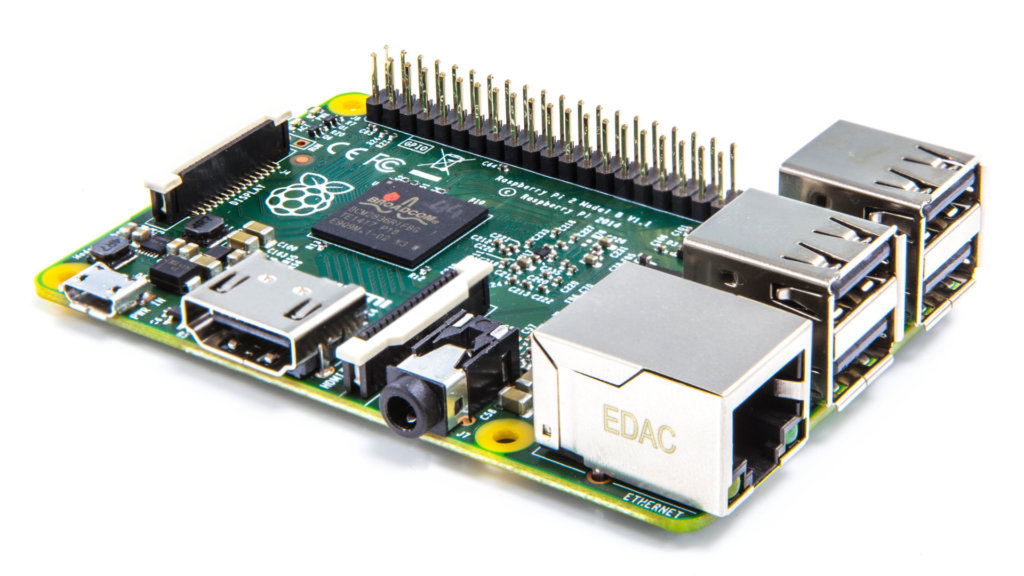
For Outstation Students, we are having online project classes both technical and coding using net-meeting software
For details, Call: 9886692401/9845166723
DHS Informatics providing latest 2022 – 2023 IEEE projects on Raspberry Pi projects for the final year engineering students. DHS Informatics trains all students in Blockchain techniques to develop their project with good idea what they need to submit in college to get good marks. DHS Informatics offers placement training in Raspberry Pi at Bangalore and the program name is OJT – On Job Training, job seekers as well as final year college students can join in this placement training program and job opportunities in their dream IT companies. We are providing IEEE projects for B.E / B.TECH, M.TECH, MCA, BCA, DIPLOMA students from more than two decades.
Python Final year CSE projects in Bangalore
A Hybrid Connectivity Oriented Telemedicine System For Indian Landscape Using Raspberry Pi SBC & IOT
Abstract: The proposed system is based on Raspberry Pi Single board computer system. This system is designed to connect to any type of network such as GPRS, LAN, Wi-Fi for telemedicine. This system will serve as communication backbone for telemedicine implementation in rural India. Recently, remote healthcare systems have received increasing attention in the last decade, explaining why intelligent systems with physiology signal monitoring for e-health care are an emerging area of development. Therefore, this work adopts a system which includes continuous collection and evaluation of multiple vital signs, long-term healthcare, and a cellular connection to a medical center in emergency case and it transfers all acquired raw data by the internet in normal case. The proposed system can continuously acquire four different physiological signs, for example, ECG, SpO2, temperature, and blood pressure and further relayed them to an intelligent data analysis. The proposed system also has a friendly web-based interface for medical staff to observe immediate pulse signals for remote treatment. Once abnormal event happened or the request to real-time display vital signs is confirmed, all physiological signs will be immediately transmitted to remote medical server through both cellular networks and internet. Also data can be transmitted to a family member’s mobile phone or doctor’s phone through GPRS. A prototype of such system has been successfully developed and implemented, which will offer high standard of healthcare with a major reduction in cost for our society. By using this system doctors are easily communicate with high experience and forensic people.
Abstract: An underwater remotely controlled vehicle is termed as an underwater rover as it is remotely controlled from the top of the host ship above the water surface. Now the working principle of an underwater rover is not similar to a remotely controlled car or drone. So, a steel cable is of great necessity for a proper connection between the user at the host ship and the underwater rover as this is a remotely controlled rover. There lies a great variety of its application, it can be used for getting the live video or still pictures of the underwater life and all the underwater activities to learn about the underwater life. It makes the job for divers, rescuers and gem collectors easier as the rover gives the pictures, live video and all the other relevant details necessary for having a proper knowledge about the underwater elements. The underwater rover engine can be built using many types but here we are going to discuss about Raspberry Pi controlled engine underwater rover; i.e; an ROV underwater rover using Raspberry Pi.
Abstract: Software-defined networking (SDN) is rapidly transforming the networking ecosystem of cloud computing datacenters. However, replicating SDN enabled cloud infrastructures to conduct practical research in this domain requires a great deal of effort and capital expenditure. This article presents the CLOUDS-Pi platform, a small-scale cloud datacenter for doing research on software defined clouds. As part of it, Open v Switch is integrated with Raspberry-Pis, low-costembedded computers, to build up a network of OpenFlow switches. The article providestwo use cases and reports on validation and performance evaluation. It also discussesthe benefits and limitations of CLOUDS-Pi in particular and SDN in general.
Abstract: In this paper, a Lorenz-like chaotic system was developed to encrypt the dorsal hand patterns on a microcomputer. First, the dorsal hand vein images were taken from the subjects via an infrared camera. These were subjected to two different processes called contrast enhancement and segmentation of vein regions. Second, the pre- and post-processed images were encrypted with a new encryption algorithm in the microcomputer environment. For the encryption process, random numbers were generated by the chaotic system. These random numbers were subjected to NIST-800-22 test which is the most widely accepted statistical test suite. The speeded up robust feature (SURF) matching algorithm was utilized in the initial condition sensitivity analysis of the encrypted images. The results of the analysis have shown that the proposed encryption algorithm can be used in identification and verification systems. The encrypted images were analyzed with histogram, correlation, entropy, pixel change rate (NPCR), initial condition sensitivity, data loss, and noise attacks which are frequently used for security analyses in the literature. In addition, the images were analyzed after noise attacks by means of peak signal-to-noise ratio (PSNR), mean square error (MSE), and the structural similarity index (SSIM) tests. It has been shown that the dorsal hand vein images can be used in identification systems safely with the help of the proposed method on microcomputers.
Abstract: Technology is growing at an unexpectedly fast pace with the unveiling of the family friendly robots that play the role of a personal assistant at home. Man has already started interacting with computers and smartphones. It is anticipated that social robots shall replace these computers and smartphones in the near future. This work is delving into the design of one such social robot, which supports the above proposition. This paper discusses of an interactive personal assistant robot that is developed using the Raspberry Pi computing engine.
IEEE RASPBERRY PI PROJECTS (2021 – 2022)
| S.NO | Raspberry Pi Projects List | Synopsis |
|---|---|---|
|
1
|
A Personal Healthcare IoT System model using Raspberry Pi 3
|
|
|
2
|
A Practical High Efficiency Video Coding Solution for Visual Sensor Network using Raspberry Pi Platform
|
|
|
3
|
A Proposal of Hardware Channel Bonding for IEEE802.11n Wireless Network Using Raspberry Pi
|
|
|
4
|
A Raspberry Pi Based Event Driven Quasi Real Time Attendance Tracker
|
|
|
5
|
SMARISA: A Raspberry Pi based Smart Ring for Women Safety Using IoT
|
|
|
6
|
Raspberry pi based impentation of digital Advertise hoarding with email alert to end customer
|
|
|
7
|
Raspberry pi based Remote Virtual Lab Access and capturing physical image of laboratory
|
|
|
8
|
IOT,GPRS and Raspberry Pi Based Globle Industrial Process Monitoring through Wireless Communication
|
|
|
9
|
Raspberry pi based Deadly School Van Monitoring System with E-mail Alert
|
|
|
10
|
Implementation of Smart Home Automation System through E-mail using Raspberry pi and Sensor
|
|
|
11
|
Raspberry pi based Gesture based Email Access and Voice Commend for Blind And Dumb
|
DHS Informatics believes in students’ stratification, we first brief the students about the technologies and type of Raspberry Pi projects and other domain projects. After complete concept explanation of the IEEE Raspberry Pi projects, students are allowed to choose more than one IEEE Raspberry Pi projects for functionality details. Even students can pick one project topic from Raspberry Pi and another two from other domains like Raspberry Pi, image process, information forensic, big data, and Raspberry Pi, block chain etc. DHS Informatics is a pioneer institute in Bangalore / Bengaluru; we are supporting project works for other institute all over India. We are the leading final year project centre in Bangalore / Bengaluru and having office in five different main locations Jayanagar, Yelahanka, Vijayanagar, RT Nagar & Indiranagar.
We allow the ECE, CSE, ISE final year students to use the lab and assist them in project development work; even we encourage students to get their own idea to develop their final year projects for their college submission.
DHS Informatics first train students on project related topics then students are entering into practical sessions. We have well equipped lab set-up, experienced faculties those who are working in our client projects and friendly student coordinator to assist the students in their college project works.
We appreciated by students for our Latest IEEE projects & concepts on final year Raspberry Pi projects for ECE, CSE, and ISE departments.
Latest IEEE 2020 – 2021 projects on Raspberry Pi with real time concepts which are implemented using Java, MATLAB, and NS2 with innovative ideas. Final year students of computer Raspberry Pi, computer science, information science, electronics and communication can contact our corporate office located at Jayanagar, Bangalore for Raspberry Pi project details.
Raspberry Pi
 Embedded systems are a cornerstone of the electronics industry today.
Embedded systems are a cornerstone of the electronics industry today.
An embedded system is a computer or processor based system that has been designed for a specific purpose.
The system gains its name from the fact that the software is embedded into it for a particular application. The embedded system is not like a PC or other computer that can run a variety of programmes and fulfil a whole host of tasks.
The item using an embedded system is designed for a specific task and has its software preloaded, although updates may be undertaken from time to time.
Embedded systems basics
It may be asked what is an embedded system. With many processor based systems and computers it is useful to define what an embedded system is. A convenient definition for an embedded system is An embedded system is any computer system contained within a product that is not described as a computer.
Using this embedded system definition it is possible to understand the various basic characteristics one. Typically they are:
- Embedded systems are designed for a specific task. Although they use computer techniques, they cannot be used as a general purpose computer using a variety of different programmes for different task. In this way their function can be focussed onto what they need to do, and they can accordingly be made cheaper and more efficiently.
- The software for embedded systems is normally referred to as firmware. Rather than being stored on a disc, where many programmes can be stored, the single programme for an embedded system is normally stored on chip and it is referred to as firmware.
Embedded systems contain two main elements
- Embedded system hardware: As with any electronic system, an embedded system requires a hardware platform on which to run. The hardware will be based around a microprocessor or microcontroller. The embedded system hardware will also contain other elements including memory, input output (I/O) interfaces as well as the user interface, and the display.
- Embedded system software: The embedded system software is written to perform a particular function. It is typically written in a high level format and then compiled down to provide code that can be lodged within a non-volatile memory within the hardware.
Embedded Processor Hardware
- Embedded systems basics
- Embedded processor hardware
- CPU
- Embedded MPU
- Embedded MCU
- RAM
When developing an embedded system, one of the options is to base the computational hardware around a microcontroller, MCU rather than a microprocessor, MPU.
Both approaches have their attractions, but generally they will be found in different applications. Typically the microcontroller, MCU, is found in applications where size, low power and low cost are key requirements.
The MCU, microcontroller is different to a microprocessor in that it contains more elements of the overall processing engine within the one chip.
Bringing most of the processing engine components onto a single chip reduces size and cost. This enables it to become economical viable to digitally control even more devices and processes. Also it is found that mixed signal microcontrollers are being increasingly used, integrating analogue components needed to control non-digital electronic systems.
Microcontroller basics
Microcontrollers comprise the main elements of a small computer system on a single chip. They contain the memory, and IO as well as the CPU one the same chip. This considerably reduces the size, making them ideal for small embedded systems, but means that there are compromises in terms of performance and flexibility.
As microcontrollers are often intended for low power and low processing applications, some microcontrollers may only use 4 bit words and they may also operate with very low clock rates – some 10 kHz and less to conserve power. This means that some MCUs may only consume a milli watt or so and they may also have sleep consumption levels of a few nano watts. At the other end of the scale some MCUs may need much higher levels of performance and may have very much higher clock speeds and power consumption.
Different types of Microcontrollers
- 8051
- ARM
- PIC
- Arduino
- AVR
| Functions | 8051 | PIC | AVR | ARM |
|---|---|---|---|---|
| Bus width | 8-bit for standard core | 8/16/32-bit | 8/32-bit | 32-bit mostly also available in 64-bit |
| Communication Protocols | UART, USART,SPI,I2C | PIC, UART, USART, LIN, CAN, Ethernet, SPI, I2S | UART, USART, SPI, I2C, (special purpose AVR support CAN, USB, Ethernet) | UART, USART, LIN, I2C, SPI, CAN, USB, Ethernet, I2S, DSP, SAI (serial audio interface), IrDA |
| Speed | 12 Clock/instruction cycle | 4 Clock/instruction cycle | 1 clock/ instruction cycle | 1 clock/ instruction cycle |
| Memory | ROM, SRAM, FLASH | SRAM, FLASH | Flash, SRAM, EEPROM | Flash, SDRAM, EEPROM |
| ISA | CLSC | Some feature of RISC | RISC | RISC |
| Memory Architecture | Von Neumann architecture | Harvard architecture | Modified | Modified Harvard architecture |
| Power Consumption | Average | Low | Low | Low |
| Families | 8051 variants | PIC16,PIC17, PIC18, PIC24, PIC32 | Tiny, Atmega, Xmega, special purpose AVR | ARMv4,5,6,7 and series |
| Community | Vast | Very Good | Very Good | Vast |
| Manufacturer | NXP, Atmel, Silicon Labs, Dallas, Cyprus, Infineon, etc. | Microchip Average | Atmel | Apple, Nvidia, Qualcomm, Samsung Electronics, and TI etc. |
| Cost (as compared to features provide) | Very Low | Average | Average | Low |
| Other Feature | Known for its Standard | Cheap | Cheap, effective | High speed operation Vast |
| Popular Microcontrollers | AT89C51, P89v51, etc. | PIC18fXX8, PIC16f88X, PIC32MXX | Atmega8, 16, 32, Arduino Community | LPC2148, ARM Cortex-M0 to ARM Cortex-M7, etc. |

IEEE projects for CSE final year 2021-2022
Java Final year CSE projects in Bangalore
- Java Information Forensic / Block Chain B.E Projects
- Java Cloud Computing B.E Projects
- Java Big Data with Hadoop B.E Projects
- Java Networking & Network Security B.E Projects
- Java Data Mining / Web Mining / Cyber Security B.E Projects
- Java DataScience / Machine Learning B.E Projects
- Java Artificaial Inteligence B.E Projects
- Java Wireless Sensor Network B.E Projects
- Java Distributed & Parallel Networking B.E Projects
- Java Mobile Computing B.E Projects
MatLab Final year CSE projects in Bangalore
- Matlab Image Processing Projects for B.E Students
- MatLab Wireless Communication B.E Projects
- MatLab Communication Systems B.E Projects
- MatLab Power Electronics Projects for B.E Students
- MatLab Signal Processing Projects for B.E
- MatLab Geo Science & Remote Sensors B.E Projects
- MatLab Biomedical Projects for B.E Students

Android Final year CSE projects in Bangalore
- Android GPS, GSM, Bluetooth & GPRS B.E Projects
- Android Embedded System Application Projetcs for B.E
- Android Database Applications Projects for B.E Students
- Android Cloud Computing Projects for Final Year B.E Students
- Android Surveillance Applications B.E Projects
- Android Medical Applications Projects for B.E
Embedded Final year CSE projects in Bangalore
- Embedded Robotics Projects for M.tech Final Year Students
- Embedded IEEE Internet of Things Projects for B.E Students
- Embedded Raspberry PI Projects for B.E Final Year Students
- Embedded Automotive Projects for Final Year B.E Students
- Embedded Biomedical Projects for B.E Final Year Students
- Embedded Biometric Projects for B.E Final Year Students
- Embedded Security Projects for B.E Final Year

